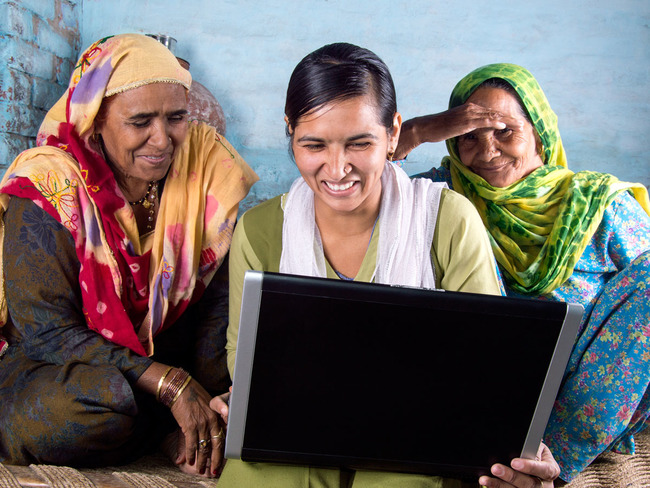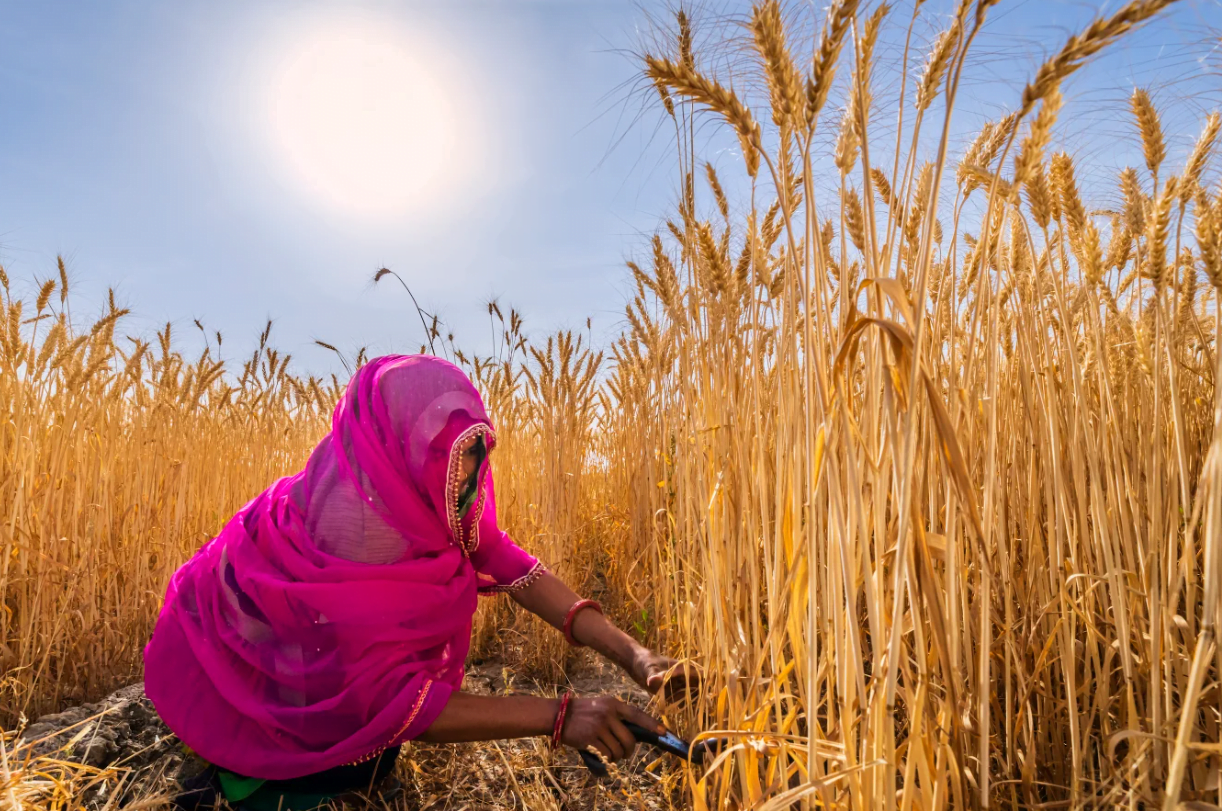Editor’s Note: FII’s #MoodOfTheMonth for August 2022 is Gender and STEM. We invite submissions on the many layers of this theme throughout the month. If you’d like to contribute, kindly refer to our submission guidelines and email your articles to sukanya@feminisminindia.com
In the current era of unrestricted access to the internet, women have been quite evidently made vulnerable to several instances of violence such as cybercrime, digital threats, privacy breach, and more. However, with this increase in the occurrence of online violence, there has also been an increase in the digital resources that help women to tackle it.
With better access to information online, women have developed a greater sense of awareness. Feminist digital platforms, online educational media, instructional blogs and videos, safety apps, and the like, have opened up women to a virtual space that gives them avenues for self-assertion.
Moreover, these digital spaces provide women with the comfort of anonymity. A virtual space that is accessible anonymously can offer a form of safety that probably no offline or physical medium can offer to individuals of an oppressed identity. Let us look at a few technological media that have aided women and helped them develop a shared web of sisterhood, virtually.
Feminist digital platforms and workshops
Digital platforms have probably given the most amount of access to education and awareness for women in recent times. With the evolving political conscience, digital platforms are attempting to be more inclusive than ever before. Assuring safety, inclusivity and a voice for women and gender minorities across all intersections are not just options anymore but necessities. Organisations that have shifted their content heavily from offline to online media during the two years of Covid lockdowns have undoubtedly implemented this the most.
Feminist digital platforms have opened up space for every individual to express their opinions, fears, and anxieties, as well as moments of joy either anonymously or by claiming a name for themselves. Digital platforms have helped women to also articulate their experiences in words or artistic forms, and share them with the other women of the world.
Starting from callout posts to survival stories, women have found a shared space where voices seem familiar and safer. Social media is one of the major sources that nurture a sense of sisterhood among women of younger generations. Through Whatsapp groups, Instagram posts talking about women’s issues, Facebook groups, and Twitter threads, women and gender minorities feel aware and backed up. Several other popular social media platforms are especially women-oriented and have given women a comfortable space to open up

Workshops and educational programs for women have always existed as a significant means to keep them aware and informed. However, the two factors that have always been a dent in these offline programmesprograms are accommodation and accessibility.
With the introduction of various online media for group calls and meetings, significant programs have been shifted vastly from being held in offline spaces to being held online. Physical spaces have a hindrance in reaching out to a larger section of the society in terms of numbers and access. An obvious reason for this is that offline programs require a targetted audience to assemble from faraway places which is often not possible for women, especially housewives, working women, mothers, and women from families that lack the privilege of attending programs that are likely to be held in places away from their homes.
Moreover, many women also feel uncomfortable showing up at places as they fear the consequences of being spotted. This is especially an issue for survivors of violence, who might feel more comfortable maintaining anonymity while also being willing to attend workshops, discourse, and other gatherings.
Online media has significantly changed the scenario as workshops now see the participation of women all across the country. Access to information and education is now just a click away. Women do not have to leave their comfort zones or bear the brunt of traveling distances to attend a skill-building program or a workshop they are interested in.
Online education has proven to be far more convenient and flexible for women everywhere. Google Meet, Zoom calls, Teams, and several other popular communication technology platforms have made this possible.
Social media platforms
Many people might consider social media as a platform that only gives exposure to frivolous pursuits, toxicity, and online violence. However, social media is an extremely subjective space that caters differently to different people. Despite its adversities, social media is a very important example of how technology has cemented solidarity among women.
Starting from callout posts to survival stories, women have found a shared space where voices seem familiar and safer. Social media is one of the major sources that nurture a sense of sisterhood among women of younger generations. Through Whatsapp groups, Instagram posts talking about women’s issues, Facebook groups, and Twitter threads, women and gender minorities feel aware and backed up. Several other popular social media platforms are especially women-oriented and have given women a comfortable space to open up.
Apart from these, many platforms also post instructional blogs and videos that help women learn countless activities and skills. Long lost interests are rediscovered and new skills are learned from these platforms. The content on these platforms also inspires other women to make the content of their own. This is a reason why so many women have their own Youtube channels in recent years, where they proudly showcase their skills while simultaneously inspiring countless others.
Social media also allows women to connect to other women from other parts of the world, or simply relate to them through shared stories. It has undoubtedly been one of the major sources where women have found their sense of a lost self again through expression and connectivity.
:max_bytes(150000):strip_icc()/GettyImages-953778398-223b66f7d7384cb1af630081b02d1248.jpg)
Online job openings
In the last few years, more women have been able to attain financial independence through online workspaces. Special job openings for women through various online sites have increased the availability of work for them. Housewives or mothers who have remained on long breaks are now able to access exclusive opportunities to start working again. Several websites offer full-time as well as part-time jobs that they can do sitting at home.
The lockdown has especially been a boon to many women who have previously not been able to accommodate the time and energy to join physical workspaces. This has been made possible only because of thoughtful advancements in technological means that have made work more accessible to women. With continuous updates of new work available on numerous websites and digital platforms, many women have found online resources much smoother to access than offline ones.
technological developments have opened up many opportunities and platforms for women in the virtual space. They have aided women to exercise their right to work, and freedom of expression that they are often unable to assert. This is a very positive aspect of technology and testifies how it can be used to empower individuals from marginalised identities. However, it cannot be forgotten that to use these virtual opportunities, access to the internet is a requisite. It remains a question as to how many women and individuals from marginalised groups have primary access to such technology
Safety apps
Last but not least is the introduction of safety apps. Technology has made it possible to track the physical and emotional safety of women all the time through the use of safety apps. In times of potential dangers or violence, these safety apps have time and again enabled women to seek the help of family members, neighbours, friends, and even the police.
Apps like Safetipin, Raksha, Himaat, and many more, are some popular safety apps used by Indian women. These apps are designed in ways that are easy for women of all ages to use. For example, the Shake2Safety app, as its name suggests, only requires a person to shake their device or press the power button four times to notify desired sources with an SOS text or call.

With greater advancements and access to technology, women are becoming more aware of these apps and other digital platforms. Elderly women, women who live alone, young women who travel for college, and working women who work late shifts have especially received a lot of help from these safety apps.
Thus, technological developments have opened up many opportunities and platforms for women in the virtual space. They have aided women to exercise their right to work, and freedom of expression that they are often unable to assert. This is a very positive aspect of technology and testifies how it can be used to empower individuals from marginalised identities.
However, it cannot be forgotten that to use these virtual opportunities, access to the internet is a requisite. It remains a question as to how many women and individuals from marginalised groups have primary access to such technology. Interventions in this context must be made to ensure that intersectional lacunas are addressed and that technology and the internet become more accessible to everyone.
Also read: Miss Universe Trolled By Mediocre Men And Called A Gold-digger: Sushmita Sen And The Sexist Internet
Featured Image Source: Ritika Banerjee for Feminism In India




